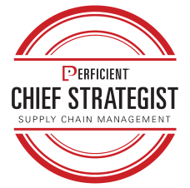My last post outlines the opportunities companies can take to implement sustainability protocols. This final blog in the series continues to identify sustainability measures companies can take.
When building a roadmap for the supply chain organization, leadership can look at sustainability in two ways: by considering the impact of each operational component in the supply chain separately, or holistically viewing supply chain sustainability as a standalone component. Either approach can yield the desired results, depending on the participation of leadership.
The following sections examine the seven most beneficial areas to review in order to identify processes and standards where opportunities exist to make sustainably a priority:
- Planning/S&OP
- Process optimization
- Procurement
- Product lifecycle management
- Reverse logistics
- Consumer communications
- Facility operating costs
This blog highlights consumer communications and facility operating costs.
Consumer Communications
Educating customers on how to recycle a product’s packaging or the product itself can help effectively close out the product’s lifecycle. The recycling industry is changing, and people expect higher-quality products. Often, if products are not recycled the right way, regardless of one’s good intentions, these items can still end up in landfills.
Aligning consumer expectations with the company’s commitment to sustainability will likely require compromises. The packaging may need to change, which may impact how the product is displayed in the store. How does that change the customer experience? Why was the change made? Always let customers know what’s being done and why it is the right thing.
Facility Operating Costs
When thinking about environmental cost, it is easy to only consider the impacts on the company’s numbers. However, there can be a substantial upside to sustainable supply chain and operations. Focusing on improving efficiency around variable and fixed-cost resources can reduce operating costs and improve profitability. Reducing water and energy consumption, minimizing waste, and optimizing processes can all also reduce cost. The marketplace has begun to notice the financial benefits of environmentally motivated efficiency improvements and has begun to value them more.
Arabesque and University of Oxford reviewed academic literature on sustainability and corporate performance, and found that in the 200 studies analyzed, 80% of the companies surveyed said that stock price performance is positively correlated with good sustainability practices. The study also reported:
- Reducing energy costs through efficient vehicles, lights, etc., leads to reduced operating costs, as well a cleaner environment
- Improved packaging, product design, and processes can reduce the costs of materials
- Some laws and regulations can (e.g., carbon tax credits, incentives) can encourage sustainable practices
- Public relations and consumer sentiment can improve from sustainability
- Sustainability certifications (e.g., LEED) can result in substantial tax credits
Whirlpool implemented a program that focused on reducing facility operating costs. The company announced the installation of three wind turbines to reduce the power demand at its plant in Greenville, Ohio, with the expectation of replacing up to 70% of its energy with renewable energy. These turbines are contributing to the company’s goal of reducing US greenhouse gas emissions by 30%.
There are significant opportunities and benefits, both financially and socially, to make sustainability in the supply chain part of the organization’s strategic roadmap. New generations are more aware of the impact that companies can have on the world in which they live. A company’s position as a sustainability leader may influence customers’ buying trends, and subsequently, the bottom line.
To learn more about developing and implementing a sustainability program into your business, you can download our guide here. Or, you can download the guide below.

